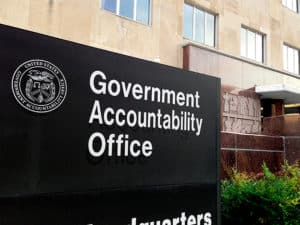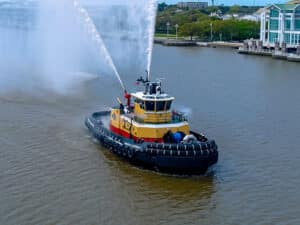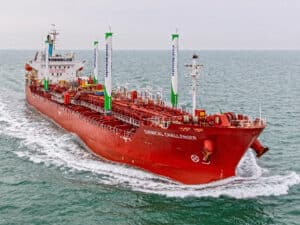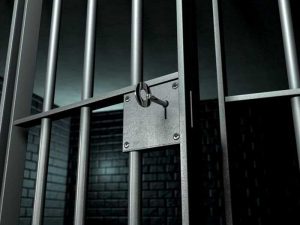
Battery powered ferry to have Azipull propulsion
Written by Nick Blenkey MARCH 22, 2013 — Rolls-Royce plc has signed a contract for the delivery of its Azipull propulsion and control system for a “ferry of the future” that will operate on battery power alone.
MARCH 22, 2013 — Rolls-Royce plc has signed a contract for the delivery of its Azipull propulsion and control system for a “ferry of the future” that will operate on battery power alone.
The vessel is being built at the Fjellstrand shipyard in Norway, and once in service will be operated by Norwegian ferry operator Norled between Lavik and Oppedal.
In 2010, the Norwegian Ministry of Transport announced a tender to develop a new ferry that was 15 to 20 per cent more energy efficient than existing vessels. The Rolls-Royce Azipull propulsion system, which utilizes pulling propellers as opposed to conventional azimuth thrusters will help the battery powered, aluminum catamaran meet these standards.
Neil Gilliver, Rolls-Royce, President – Merchant said: “The combination of good maneuverability and reduced energy consumption provides a highly efficient ferry for Norled, with significantly reduced operating costs and improved environmental performance. This contract also marks the tenth anniversary of the delivery of our very first Azipull thrusters, which was also to Fjellstrand shipyard.”
The 80 m ferry will have a capacity of 120 cars and 360 passengers, and will operate at a speed of about 10 knots, taking 20 minutes to cross between Lavik and Oppedal. The ferry will charge its lithium-ion batteries while loading or unloading cars, and overnight when moored along the quay.
The ferry was developed by Fjellstrand in cooperation with Siemens and has been specially designed to accommodate the requirements of an electric drive system.
As a catamaran with two slim hulls, it offers less resistance in the water than a conventional vessel. Furthermore, the hulls are made of aluminum rather than steel. Rather than a diesel engine, the ferry is equipped with electric motors to drive the ship’s two screws. These motors are powered by a battery weighing 10 metric tons. All in all, says Siemens, the new vessel weighs only half as much as a ferry of conventional design. This saving has a direct impact on the specifications of the drive system. Whereas the ferry currently serving the route has an engine with an output of 1,500 kW, the battery in the new vessel will have an output of 800 kW. In normal conditions, operating at a speed of 10 knots, battery power of 400 kW will suffice, says Siemens.
The new ferry will only take 10 minutes to recharge the battery. In the two small villages linked by the ferry, however, the local grid is not equipped to deliver such a large amount of power in such a short space of time. To deal with this problem, batteries have been installed at each port. These will recharge the ferry’s battery during turnaround and will then themselves be slowly recharged from the local grid.





Leave a Reply
You must be logged in to post a comment.